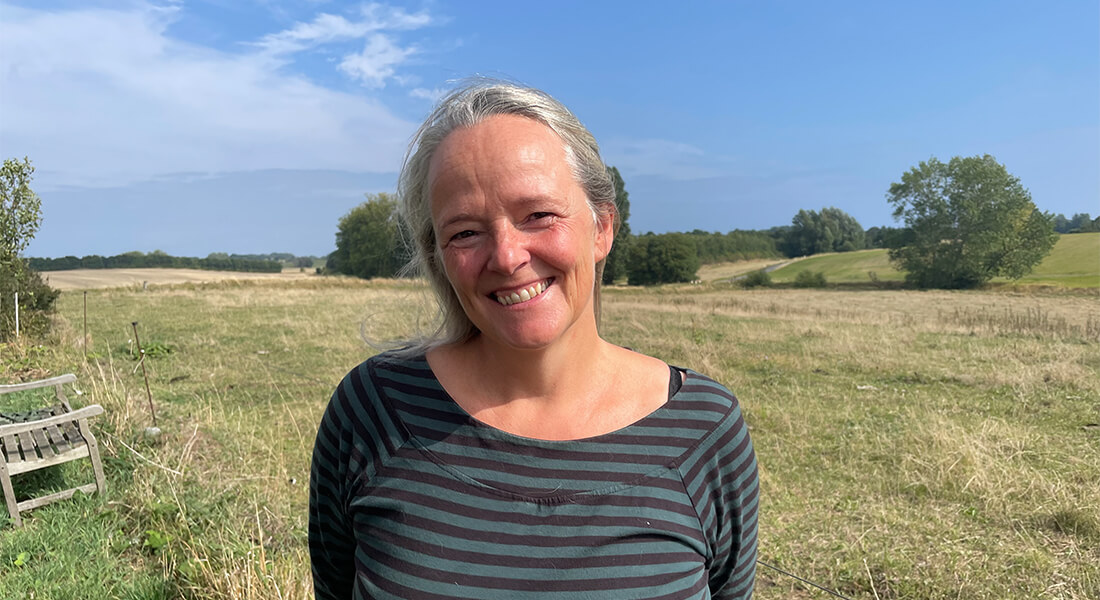Professor Bente Vestergaard is now emerita
After an exciting and influential career with a great scientific impact, Professor Bente Vestergaard has now changed her title to Professor Emerita. On this occasion, Pharma Communication invited her to tell us about her own perspectives on her work as a researcher in the field of pharma.

In your progress as a researcher, what has been most interesting and fascinating to you?
If I had to pick two moments, one is from my last year as master student at Aarhus University, while the other is from my first
post doc period at the Royal Danish School of Pharmacy. In the last year of my master studies, I followed a hands-on course in structural biology, and here I saw electron density generated from a protein crystal for the first time. This moment was highly enlightening: suddenly I understood the basic concept of macromolecular structure:function. But perhaps more importantly the moment filled me with awe, giving me the feeling that I gazed into the very essence of a protein.
The second event that stands out was during my very first small angle X-ray scattering (SAXS) experiment at the synchrotron in Hamburg. Approaching the end of a very long night’s work, our data were finally good enough to provide experimental proof that my working hypothesis concerning this particular protein’s structure:function was utterly wrong. That is – the data that we obtained were so convincing that I had to revise my understanding of this protein function. Hence, I decided to focus my research using this method extensively. I have never regretted that decision.
Is there a discovery you have made as a researcher that gave you a “wow, this is truly something new” experience?Certainly the above-mentioned experience, realizing that the SAXS method was so useful. And even more so when we first applied SAXS to the investigation of amyloid protein fibrillation. Protein fibrillation is unequivocally associated with very grave diseases, such as Alzheimer and Parkinson’s diseases, and the process involves a number of intricate structural rearrangements, happening at very different time and length scales. Since SAXS data are collected from proteins in solution at suitable time scales, this complex process can be described. We were among the pioneers in that field and developed the method extensively over the following years.
You have specialized in structural biology throughout your career – and you have been involved in e.g. Max-IV in Sweden. What has your role been here, and since the synchrotron and beamline facilities have undergone an intensive development, how will you describe the opportunities this has made for your research?
Throughout my career, we have benefitted immensely from access to the large-scale facilities (synchrotrons and neutron facilities) and we have collaborated extensively with the beamline scientists and group leaders at several of these facilities. I cannot emphasize enough how important frequent access and close collaborations have been for the generation of the data, that have led to new insights, subsequently driving the development of my research portfolio. Without this, my research career had not been possible.
At MAX lab in Lund, we were even allowed to participate in the development of the first SAXS beamline, and we were granted direct beamline control, when developing a microfluidic platform for a next-generation SAXS data collection strategy. I was also invited to contribute to the strategic planning of the SAXS facilities at MAX IV, and MAX lab were partners during the years, when I, in close collaboration with Professor Lise Arleth, organized international BioSAXS courses for young structural biologists.
What have you learned from being a leader? - group leader of the BioSAXS group here at the Department and director of BRAINSTRUC.
It would take too much space, to describe everything that I have learned from being a leader. However, if I should emphasize two things, I choose the following:
- Your group members represent a wealth of genius, inspiration, creativity and skills and you must be careful to not stand in the way of their development, which may happen, e.g. if you are too rigorous in following your own initial ideas
- 2) The joy of facilitating the means enabling other people’s development and success greatly succeeds the joy of your own successes.
Please let me take this opportunity to say, that I am deeply grateful that so many young researchers have trusted me to be their supervisor at many different academic levels (from bachelor students to postdocs), and also that many different researchers and research leaders have chosen to collaborate with me on such a wealth of interesting projects.
Interaction with other scientists – experienced and less experienced – has perhaps been the biggest joy of my years as researcher.
Do you have any specific interests that you will spend time on now?
I think I am the kind of person who always has more interests than time allows to follow up on. My research career has ended all too early due to a stroke in 2017, which unfortunately no longer allows me to continue my academic activities at a level that were satisfactory to me nor (in my opinion) to my institution. Luckily, I will continue some scientific collaboration with my friend and closest colleague - Associate Professor Annette Langkilde and the rest of the time I will be working in my newly established ceramics workshop in Samsø. I have also taken up a long-missed childhood interest, playing classical music on the piano, which is highly satisfactory.
